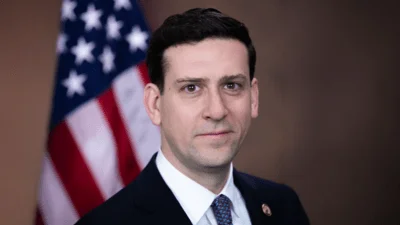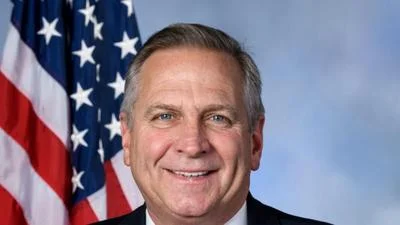Today, U.S. Secretary of Commerce Penny Pritzker delivered remarks at the final U.S. Manufacturing Council meeting of the Obama administration. She commended the Council for its leadership in promoting programs and initiatives to help grow the U.S. manufacturing sector.
During her remarks, Secretary Pritzker thanked Council members for their service and highlighted the Council’s achievements in areas ranging from technology innovation to workforce development to international trade policy.
Remarks As Prepared for Delivery Good morning. It is truly an honor to be here for the final meeting of the 2015-2016 U.S. Manufacturing Council. Today is an opportunity to acknowledge the many contributions of this Council. I want to start by thanking Chair Susan Smyth and Vice Chair Claudine Martinez for their leadership and dedication. Yet each of you has worked tirelessly to put forward concrete proposals to strengthen manufacturing. Thank you for your hard work.
Eight years ago, no one could have predicted the resurgence of manufacturing we see today. The job numbers alone speak volumes. Today, there are 843,000 more manufacturing jobs than there were six years ago and companies are working to fill 353,000 more jobs. Our challenge is to sustain that growth, especially in the face of economic headwinds stemming from a strong dollar and weaker overseas demand.
At your first meeting last April, I asked you to provide us with actionable recommendations for maintaining America’s manufacturing momentum. You have delivered. Each subcommittee has offered proposals to strengthen this sector and ensure it continues spurring growth and prosperity for the American people. Today, I would like to highlight how we are turning your ideas into action.
Let me start with the Innovation, Research and Development Subcommittee. You helped us develop a process for selecting industry-driven, open topics for the National Network for Manufacturing Innovation’s next institutes. Thank you for serving as our sounding board. Your insights also helped us secure funding from Congress for the first Commerce institute. When this Council started, we had five institutes in place.
Today, we have nine up and running, and five more in the competition phase. Each one is pursuing unique and innovative fields, from additives manufacturing to next generation semiconductors. We are already seeing an unprecedented level of collaboration across public, private, and educational institutions that is turning promising discoveries into American-made products. Simply put: These institutes are a game changer for American economic competitiveness.
Turning to the Workforce Subcommittee, I want to thank you for making Manufacturing Day such a success. Too often, the word “manufacturing,” inspires images of 19th century assembly lines in our young people. Together, we are painting a different picture. Manufacturing Day is showing young Americans what manufacturing jobs look like in the 21st century. Last year, more than 400,000 people participated in 2,400 events nationwide.
This year we expect to have more than 3,000 open houses. We could not achieve this level of success without our industry partners. Thank you for the Council’s efforts to raise awareness about Manufacturing Day and for your personal involvement in making it a success in your individual companies, your industries, and your communities.
Beyond preparing our workers to compete globally, we must ensure that American businesses and job creators have access to customers around the world. Leading this Council’s work is our Trade Subcommittee. In the last year, you helped us: renew the Export-Import Bank, secure Trade Promotion Authority; and make the case for high-standard trade agreements like the Transpacific Partnership. The best argument for TPP comes from all of you, the human face of trade, the job creators who understand how increasing exports spurs growth at home. We remain fully committed to passing TPP. Thank you for making your voices heard.
Finally, the Energy Subcommittee has guided efforts to better serve manufacturers and workers competing in the new green energy economy. You revitalized the Interagency Trade Promotion Coordinating Committee and the Working Group on Renewable Energy and Energy Efficiency – paving the way for more public-private sector and cross-agency cooperation. You recommended we create a trade-related clean energy portal – and we have committed to building it. We share your vision of an online hub for manufacturers to access information about trade missions, technology providers, export assistance, and other services. Lastly, you told us about the financing obstacles that keep U.S. energy companies from competing overseas. That is why we led a renewable energy trade mission to Mexico and are planning for three more in 2017 At the Commerce Department, our mission is to create the conditions for American businesses, workers, and entrepreneurs to succeed and grow. From breaking down trade barriers to creating regional hubs for innovation, this Council has proven that we need close public-private sector cooperation to fulfill that mission.
My team and I have an ambitious agenda for the remainder of our time at the Department of Commerce. But we need your help to ensure our efforts continue beyond January 2017 and enable the next Manufacturing Council to hit the ground running. We need you to remain engaged so that manufacturing remains at the top of the next Administration’s economic agenda. You can: help us build out our National Network for Manufacturing Innovation, sign up to participate in Manufacturing Day on October 7th, speak out and keep making your voices heard on TPP.
Thank you for your service on this Council. We are grateful for your recommendations and remain laser focused on their implementation.
Source: U.S. Department of Commerce








